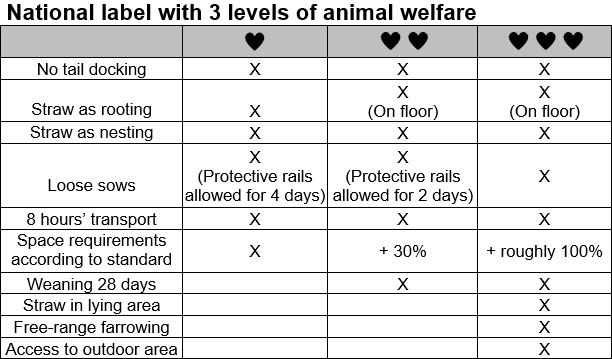Denmark raises the bar on animal care standards
Date posted: January 9, 2019

Niels-Peder Nielsen
Denmark, long-recognized as a leader in innovation in pork production, is setting a new standard for swine animal care. Their producers hope it will spur new market opportunities as a result.
Niels-Peder Nielsen of SEGES, the Danish Pig Research Centre, told the 2019 Banff Pork Seminar, Jan. 8 to 10 in Banff, Alta. that Denmark takes pride in its worldwide reputation for high efficiency in pig production, and that higher production standards for animal care are coming.
"Besides strong breeding and well-educated pig farmers, this high level of efficiency is attributed to the communication of knowledge from the Pig Research Centre to the pig advisors and on to the pig producers," he says.
To put Danish production into perspective, in 2018 there were 3,300 Danish farmers involved in pig production. Total production includes 1 million sows and 32 million weaners. Average herd size is approximately 770 sows. Per year, 18 million pigs are slaughtered in Denmark and 14 million weaners (30 kg) are exported. National average for productivity in 2017 was 33.3 weaned pigs per year per sow.
Animal welfare and society acceptance
In 2014, the Danish pig sector agreed on an arrangement with government, consumer and animal protection organizations, veterinarians and retail trades to improve animal welfare by 2020.
Danish Agriculture & Food Council Pig Production has been working in all areas and made significant progress, says Nielsen. The most essential areas include the introduction of "The Heart Pig", which is an animal welfare production guide with several levels of animal welfare. Specific details are in the accompanying table.

Furthermore, the pig sector has decided to introduce the requirement of local anesthesia when castrating piglets starting January 1, 2019.
Top welfare goals
To move Danish pig production, and especially animal welfare, even further after 2020 four areas are prioritized:
- Farrowing pens to loose nursing sows
- Intact tails
- Termination of castration
- Increased piglet survival
Farrowing pens for loose nursing sows
The goal for this focus area is that at least 10 percent of nursing sows will be in loose housing in 2020.
In looking for more knowledge, SEGES Danish Pig Research Centre in 2018 hosted the international workshop "Loose Lactating Sows 2018" to look at the future of farrowing pens for loose sows. Experts and stakeholders from Australia, the U.S., Canada and Europe participated, representing 12 universities and three essential animal welfare organizations.
Intact tails
Danes are also looking at intact tails throughout the entire life in a full scale system. SEGES Danish Pig Research Centre in 2018 introduced a demonstration project called "All in full scale". Based on existing knowledge, the aim is to demonstrate whether the production of pigs with intact tails can succeed in six to eight production herds producing standard pigs.
During an introduction period, the whole herd is reorganized gradually to eliminate tail docking. In the project process, the herds are supported with counselling with the purpose of reducing the risk of tail biting as much as possible within the existing settings.
Termination of castration
Today, approximately 320,000 entire male pigs are produced in Denmark, and castration is allowed. By Danish legislations, pain relief is required when castrating.
Since January 1 2018, pig producers can voluntarily choose to apply a local anesthetic prior to castration, if the producer has completed a seminar, approved by the Ministry of Environment and Food, in local anesthesia for piglets.
Danish Agriculture & Food Council Pig Production has decided that by January 1 2019 all Danish piglets must be applied with local anesthetic prior to castration.
Long-term plan
In the long term, the aim is to obtain these goals as a part of the production concept for the Danish standard pig, says Nielsen.
Moreover, the future foundation of the Danish pig sector is for the Danish standard quality pig to be sold on high profit markets around the world. The expectation is also that the demands for animal welfare will increase and that will be built into standard pig production. Additionally, it is expected that specialty production will become even more important on the domestic market.
Return to the News Release Index